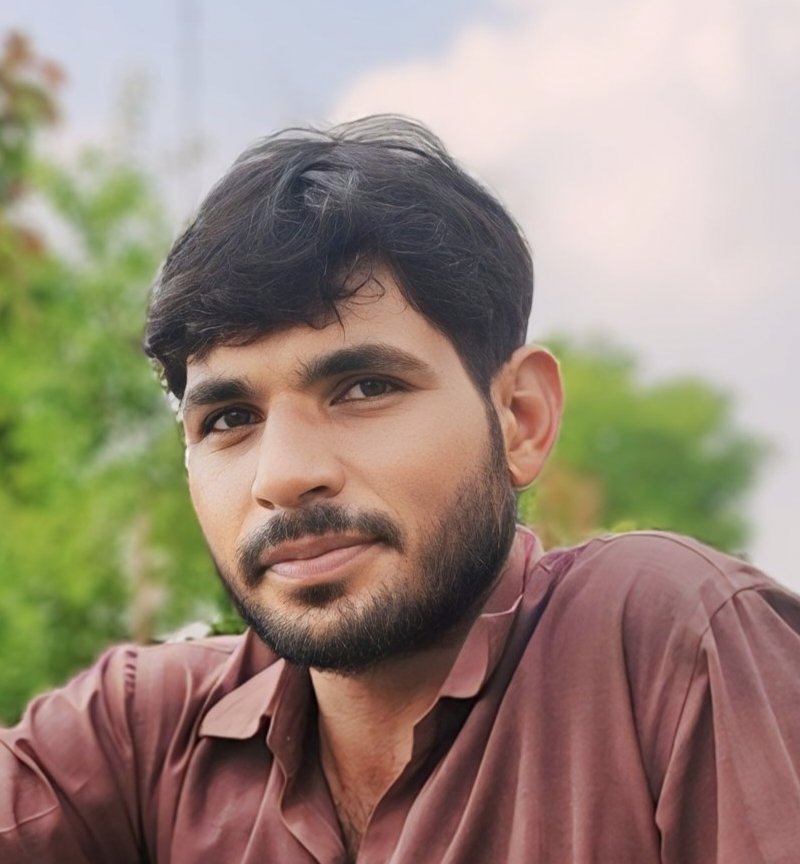CG Vyapam Sub Engineer Syllabus 2025 PDF: Chhattisgarh Professional Examination Board Raipur (CG Vyapam) के द्वारा Sub Engineer के रिक्त पदों को भरने के लिए भर्ती का आयोजन किया गया है| योग्य और इच्छुक उम्मीदवार CG Vyapam में जॉब पाना चाहते है, वे अभी से तैयारी शुरू कर दे| ऑनलाइन आवेदन करने की अंतिम तिथि 1 April 2025 निर्धारित है|
इस लेख में हम CG Vyapam Sub Engineer Syllabus & Exam Pattern 2025 के बारे में विस्तृत वर्णन करेंगे| उम्मीदवार को एग्जाम में अच्छे अंक प्राप्त करने के लिए सिलेबस और एग्जाम पैटर्न के आधार पर तैयारी करनी चाहिए|
Table of Contents
CG Vyapam Sub Engineer Syllabus 2025 Overview
CG Vyapam Sub Engineer Vacancy 2025 Notification PDF से सम्बंधित महत्वपूर्ण जानकारी का संक्षिप्त वर्णन निम्नलिखित सारणी में दिया गया है|
| Organization | Chhattisgarh Professional Examination Board Raipur (CG Vyapam) |
| Exam Name | Sub Engineer |
| Advt. No. | व्यापम /परीक्षा एफ-20/2025/693 |
| Vacancy | 128 |
| Application Mode | Online |
| Exam Date | 27 April 2025 |
| Selection Process | Written Exam Documents Verification |
| Apply Online | Click Here |
| Join Telegram Group | Click Here |
| WhatsApp Group | Click Here |
| Official Website | Click Here |
See More: Chhattisgarh Police Constable Syllabus 2025 PDF Download, CG Police Constable Exam Pattern 2025
CG Vyapam Sub Engineer Exam Pattern 2025
सभी चयनित/पात्र उम्मीदवारों को अपने-अपने पदों के लिए लिखित परीक्षा देनी होगी, जिसमें आवश्यक योग्यता के आधार पर वस्तुनिष्ठ प्रकार के प्रश्न होंगे।
लिखित परीक्षा में 100 प्रश्न होंगे, प्रत्येक प्रश्न 1 अंक का होगा।
इस पेपर में कुल 100 प्रश्न पूछे जाएंगे|
अधिकतम 100 नंबर का पेपर होगा|
| भाग-I | सामान्य अध्ययन | |
| सामान्य ज्ञान | 10 | |
| छत्तीसगढ़ का सामान्य ज्ञान | 15 | |
| भाग-II | इंजीनियरिंग | 75 |
CG Vyapam Sub Engineer Syllabus 2025 In Hindi
CG Vyapam Sub Engineer Syllabus 2025 For Part I
सामान्य अध्ययन
अ. सामान्य ज्ञान
हाई स्कूल स्तर तक का सामान्य विज्ञान
हाई स्कूल स्तर तक का भारत का भूगोल
हाई स्कूल स्तर तक का सामान्य गणित
सम सामायिक राष्ट्रीय महत्व के घटनाक्रम
खेल-राष्ट्रीय स्तर की खेल पर सामान्य प्रश्न
सामान्य बौद्धिक योग्यता- हाई स्कूल स्तर तक का विश्लेषण एवं तार्किक योग्यता
ब. छत्तीसगढ़ का सामान्य ज्ञान
छत्तीसगढ़ का इतिहास, स्वतंत्रता आंदोलन में छत्तीसगढ़ का योगदान
छत्तीसगढ़ का भूगोल, जलवायु, जनगणना, पुरातत्विक, दार्शनिक एवं पर्यटन स्थल
छत्तीसगढ़ का साहित्य, कला एवं संस्कृति, मुहावरें, हाना, एवं लोकोक्तिया
छत्तीसगढ़ की जनजातियां, बोली / भाषा, विशेष परम्परायें तीज, व्यंजन / पकवान, पर्व एवं त्यौहार
छत्तीसगढ़ की अर्थव्यवस्थावन, कृषि एवं वर्षा
छत्तीसगढ़ की सम समायिक घटनायें
CG Vyapam Sub Engineer Syllabus 2025 For Part II
उप अभियंता (सिविल)
(1) Building Materials
Bricks:- Types, Indian standard Classification, absorption, saturation, factor. strength in masonry, influence of mortar strength on masonry strength. Cement:- Compounds of different type, setting times, strength. Cement Mortor:- Ingredients, proportions, water demand, mortars for plastering and masonry
Concrete:- Importance of W/C Ratio, Strength, ingredients, including admixtutes, work ability, testing for strength, elasticity, non-destructive testing, mix design methods.
(2) Structural Analysis:-
Analysis of determinant structures-different methods including graphical methods, Analysis of indeterminant skeletal frames, moment distribution, slope deflection, stiffness and force methods, Muller-Breslau principle of application.
(3) Design of steel structures:
Principles of working stress method. Design of connections, simple member, Built-up section and frames, Design of industrial roofs.
(4) Design of Concrete and masonry Structures: Working stress method of R.C. members
Principles of presterssed concrete design, materials structures. design of simple members and determinant structure.
(5) Construction practice, planning and management: Concreting Equipment Weight Batcher, Mixtures, vibrator, concrete pump. Cranes, hosts, lifting equipment.
Earth work equipment Power shovel, hoe, dozer, dumper, trailers and rollers foot sheep foot rollers pumps
(6) Soil mechanics.
Properties of soil, Classification and interrelationship, Compaction behavior, methods, of compaction. Permeability and seepage, flow nets, inverted filters, Compressibility and consolidation shearing resistance, stresses and failure: soil testing in laboratory and Institution.
(7) Surveying
Classification of surveys, scales, accuracy, Measurement of distance direct and indirect methods: optical and electronic devices. Measurement of direction prismatic compass: local attraction, theodolities-types: measurement of elevations- Sprit and trigonometric leveling.
(8) Transportation Engineering,
Planing of Highway systems, alignment and geometric design; highway materials, highway pavements, highway construction.
(9) Public Health Engineering: (Sanitation and Water supply)
VIII. Topics in the current manuals on water supply and sanitation Engineering published by the central public Health Engineering and Environmental Organization government of India.
IX. P.H.E.Department Specification and practices.
X. Water supply and sanitation conditions in c.g. with special reference to the C.G. Government policies about urban/rural water supply/sanitation programmes.
XI. Specials programmes in execution with the assistance of other nations and international organization, world bank etc. XII. Several types of drilling rigs in the department, The types of hand pumps are use in rural areas and the procedure for their maintenance.
XIII. Government rules for maintenance of water works, practices in maintenance of water works and sewage including distribution, metering, billing, revenue collection, quality control etc
(10) General:
VI. Survey for project preparation with special reference to chain survey, compass survey, leveling, contouring. G.T.S. bench marks, top sheet, Recording of survey data in level books, field books, etc
VII. Provisions made in the nationalbuilding code published by the Indian Standard institution
VIII. Standard Specification, schedule of rates enforced in the Department and estimating procedure
IX. Quality Standard and field/laboratory testing Procedure for items like cement, sand, metal, bricks, concrete etc.
X. P.E.R.T. and C.P.M. Techniques
उप अभियंता (विद्युत-यांत्रिकी)
(1) Applied Physics
(a) Measurement of vectors. (Fundamental units, derived units unit system, S.I.Units) force motion and gravitation. classification of motion (characteristics of different type of motion. Newton’s law of motion, speed, velocity, Acceleration, equation for motion and friction, circular and rotary motion.
(b) High temperature measurement kinetic theory of gases.
(C) Thermo Dynamics, 1St., law of thermodynamic. Isothermic adiabatic charges and latent heat
(2) Applied Chemistry
(a) Metal and metallurgy its alloy corrosion and protection.
(i) Occurrence, extraction, properties and engineering uses of metal with it’s alloy
(ii) Corrosion, type, galvanic series corrosion control etc.
(b) Fuel Explosive classification and application
(C) Water treatment.
(d) pollution-meaning, Cause of pollution effect and prevention.
(3) Applied Mechanies
(a) Work power and Energy Definition, from of energy, conservation of power energy, power of engine and pumps, relation between heat and Mech. works
(b) Simple lifting M/C Law of machine, study of machine, wheel axle, pulley, jacks worm and wheel.
(C) Transmission of power. Transmission of power through belt, rope and gear, gear train, spur helical bevel gears
(4) Strength of Material
(i) Simple stress & strain. Introduction, type of stress and strain etc.
(ii) Mechanical properties & testing of materials, Definition, necessity of testing, type of test etc.
(5) Thermal Engineering
(i) Basic concept of thermo dynamics I and IInd Law of thermo dynamics
(ii) Internal ombustion engines (Introduction, function of two strokes, four strokes, efficiency. Mech, Efficiency, Lubrication of 1.C. Engine
(iii) Air compressor, classification and its application.
(iv) Hcat Transfer-Modes of Heat Transfer and its application.
(6) Basic electrical Engineering
(i) D.C. circuit- Concept, method of voltage application. Generation, typeof current and power resistance,
(ii) D.C. Machines- D.C, Motors and D.C generators.
(iii) А.C. Fundamentals, Three phase system. Transformers and three phase motors.
(7) Theory of Machines
Introduction of theory of machine, velocity. accelertation and friction, fly wheel, and crank efforts, power transmission gears and gear train, Governor Cam and folowers etc.
Introduction to Machine design, keys and couplig, springs, belt & Rope drives, joints, selection of bearings.
Lathe, Boring, Milling, Machines, griding & finishing process, jigs & Fixtures, machine tools etc.
(8) Fluid mechanic and Hydraulics
(i) Fundamental of Fluid flow and Pressure and its measurements. Basic equations of fluid flow.
Pumps – Types of pumps and selection of Pumps
(9) Material technology
Phase diagramme and iron carbon system, heat Treatment of steel, ferrous metals and alloys,. Nonferros & its alloys.
(10) Maintenance
Introduction to plant maintenance basic maintenance, fault finding & repairs, maintenance cost, wear and it’s effect, safety concepts.
(11) Automobile Engineering
(i) Basic introduction type, major components Functions & layout
(ii) Fuel system for petrol Engines
(iii) Fuel system for Diesel Engines.
(iv) Auto Electric system.
(v) Transmission and propeller shaft, final drive, rear and front.
(vi) Brakes and suspension systems wheel and tyres.
(vii) Automobiles emission and its control
Read Also: Latest Vacancy 2025 Notification Apply online new vacancy 2025
CG Vyapam Sub Engineer Syllabus 2025 PDF Download Links
| Apply Online | Click Here |
| Syllabus | उप अभियंता (सिविल) उप अभियंता (वि/यां) |
| Join WhatsApp Group | Click Here |
| Join Telegram Group | Click Here |
| Official Website | Click Here |


my name is Sandeep. I have done B.Sc.- B.Ed. I teach Math in Senior Secondary. Along with studies, I am interested in blogging on the field of government jobs. It has been 3 years since I have been blogging.
Only WhatsApp Chats: +918947997147
